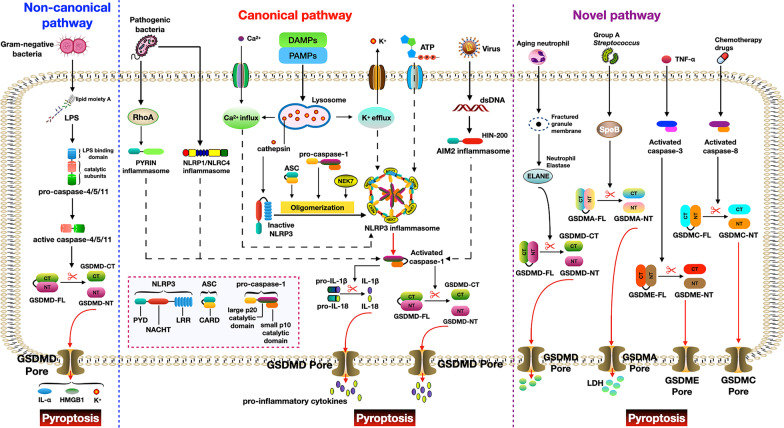Fig. 1.
Molecular mechanisms of pyroptosis. Pyroptosis is a newly identified pro-inflammatory form of programmed cell death. According to the activation of distinct caspases and execution proteins, pyroptosis can be divided into three types: canonical pathway-mediated pyroptosis, non-canonical pathway-mediated pyroptosis, and novel pathway-induced pyroptosis. DAMPs, damage‐associated molecular patterns; PAMPs, pathogen‐associated molecular patterns; NLRP1/3, nucleotide‐binding domain, leucine-rich containing family, pyrin domain‐containing 1/3; NLRC4, NLR family CARD domain-containing 4; AIM2, absent in melanoma 2; NACHT, nucleotide-binding, and oligomerization; LRR, leucine-rich repeats; CARD, caspase recruitment domain; PYD, pyrin; ASC, apoptosis-associated speck-like protein containing a CARD; GSDMD-FL, full-length GSDMD; GSDMD-CT, C-terminal GSDMD; GSDMD-NT, N-terminal GSDMD; GSDMA-FL, full-length GSDMA; GSDMA-CT, C-terminal GSDMA; GSDMA-NT, N-terminal GSDMA; GSDME-FL, full-length GSDME; GSDME-CT, C-terminal GSDME; GSDME-NT, N-terminal GSDME; RhoA, Ras homologous A; SpeB, streptococcus exotoxin B; ELANE, neutrophil elastase; HMGB1, high mobility group box 1

